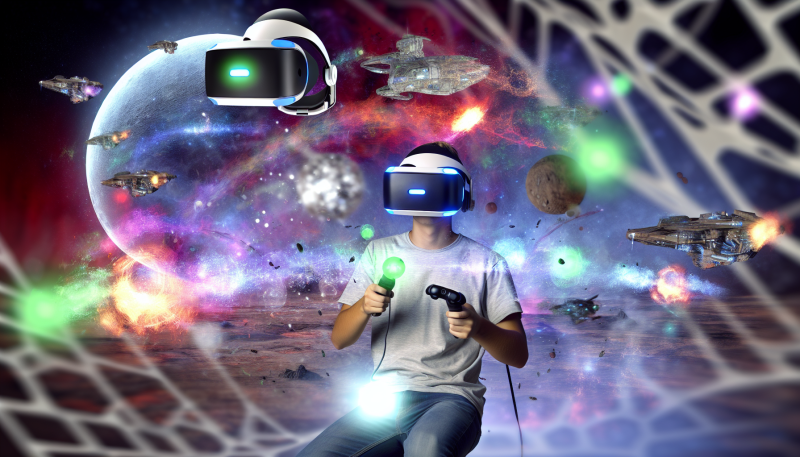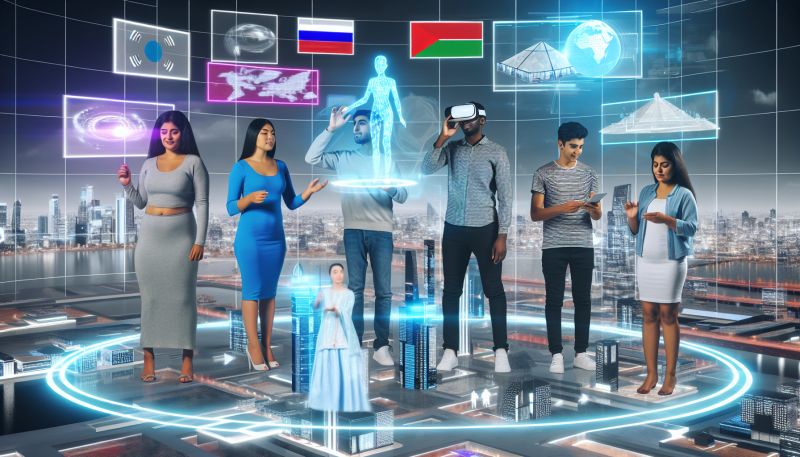Augmented Reality, often shortened to AR, is a technology that blends digital information with the real world around us. Imagine looking through your smartphone or wearing special glasses and seeing computer-generated images, animations, or data superimposed on your view of the physical world. For example, if you point your camera at a table, you might see a virtual cat sitting there, or if you scan a book cover, it could come to life with a video right in front of your eyes!
One of the simplest ways to understand AR is to think about it like a video game overlay. In many games, you see your character on the screen, but with AR, that character could appear on your actual living room floor. This merging of digital elements with our real environment creates a unique experience that can be fun, educational, and interactive.
AR isn't just for entertainment, though. Many businesses use it to enhance user experiences. For instance, furniture companies often have apps that let you see how a new sofa would look in your home before you buy it. You can point your phone at the space, and voilà! The virtual sofa appears right there, helping you make a better decision.
Moreover, AR is steadily making its way into various industries like education, healthcare, and tourism. In a classroom, students might use AR to view 3D models of the solar system right above their desks. In healthcare, doctors can use AR to visualize a patient’s anatomy during surgery, making procedures safer and more efficient. This technology, which once seemed like science fiction, is now an exciting part of our daily lives, making information more engaging and interactive.
Everyday Uses of Augmented Reality Today
Augmented Reality (AR) has seamlessly integrated into our daily lives, enhancing how we interact with the world around us. One of the most familiar uses is in retail. Many apps now let customers try on clothes, accessories, or makeup virtually before making a purchase. This not only saves time but also helps customers make more informed decisions, ultimately leading to a more satisfying shopping experience.
In education, AR is revolutionizing how students learn. Imagine a classroom where students can explore the human body in 3D or witness historical events unfold right in front of them. Apps like Google Expeditions allow learners to take virtual field trips, sparking curiosity and engagement in ways that traditional teaching methods often cannot.
Moreover, the gaming industry has embraced AR, creating immersive experiences that merge the real world with virtual elements. Popular games like Pokémon GO encourage players to explore their surroundings while capturing creatures that appear in real-time. This has not only made gaming more interactive but has also promoted physical activity and social interaction among players.
AR is also making waves in the realm of home improvement and interior design. Apps such as IKEA Place let users visualize how furniture would look in their homes before making a purchase. By simply pointing their device's camera at a room, users can see how different items fit and coordinate with their existing decor, making decorating decisions much easier.
How Augmented Reality Enhances Daily Experiences
Augmented Reality (AR) is transforming the way we interact with the world around us. By overlaying digital information onto our physical environment, AR enhances our daily experiences in exciting and innovative ways. Whether we are shopping for clothes, navigating a new city, or simply enjoying our favorite activities, AR provides us with additional layers of information and interactivity that enrich our lives.
One of the most significant ways AR improves our daily routines is through shopping. Many retail apps now feature AR-powered tools that allow customers to visualize products in their own homes before making a purchase. For instance, furniture retailers enable users to see how a sofa or table would look in their living room, helping them make more informed decisions. This technology not only makes shopping more enjoyable but also reduces the chances of returns, as customers feel more confident in their choices.
AR also plays a vital role in education and learning. By incorporating interactive elements into traditional lessons, teachers can capture students' attention and make complex subjects easier to understand. Imagine a science lesson where students can see a 3D model of the solar system floating in their classroom or a history class that allows them to explore ancient structures right from their desks. This hands-on approach not only makes learning more engaging but also helps students retain information more effectively.
Additionally, AR enhances recreational activities such as gaming and fitness. Games like Pokémon GO have shown how players can merge their digital adventures with the real world, encouraging them to explore their surroundings. Fitness apps also utilize AR to create immersive workouts that motivate users to stay active. By blending fun and exercise, these applications foster healthier lifestyles while keeping users entertained.
The Future of Augmented Reality in Life
The future of augmented reality (AR) looks incredibly bright as technology continues to advance at a rapid pace. Imagine walking down the street and seeing digital information overlaying your physical surroundings. Whether it's navigating complicated streets or finding nearby restaurants, AR could make everyday tasks easier and more enjoyable. By blending the digital with the real world, AR has the potential to enhance our experiences in ways we’ve only begun to explore.
In education, AR could transform the way students learn. Picture a classroom where history comes alive. Students might visit a virtual ancient Rome, exploring the Colosseum in real-time rather than just reading about it from a textbook. This immersive learning experience can foster deeper understanding and retention of knowledge. Furthermore, AR could aid in hands-on training for skilled professions by allowing individuals to practice in a safe, controlled environment while still seeing the real-world applications of their skills.
Retail is another sector poised for an AR revolution. Shoppers could use AR to visualize how furniture fits in their homes or see how clothes look on them without trying them on. This technology could reduce the uncertainty shoppers often feel and enhance their overall buying experience. The use of AR in commerce could bridge the gap between online and in-store shopping, offering a unique experience that combines the convenience of e-commerce with the tactile benefits of physical stores.
Healthcare is also tapping into the possibilities of augmented reality. Surgeons could use AR to overlay critical information during operations, improving precision and outcomes. Medical students might use AR simulations to practice complex procedures in a risk-free environment. The potential to improve patient care and education in the medical field through AR is vast, offering new ways to save lives and foster innovation.



